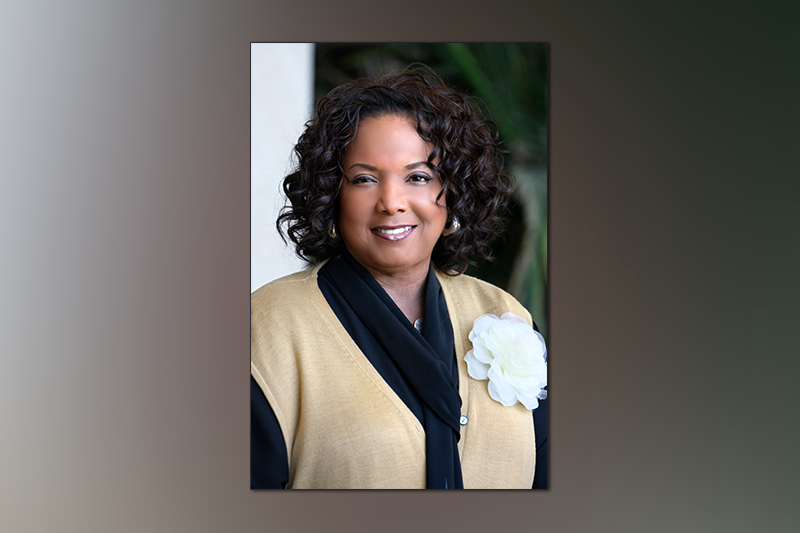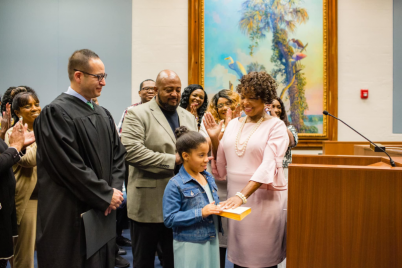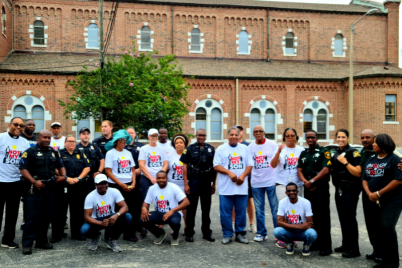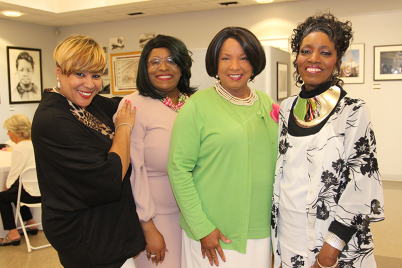Deborah Figgs-Sanders
BY ROGER K. CLENDENING, Staff Writer
ST. PETERSBURG — Profiling Deborah Figgs-Sanders, one of two remaining candidates seeking election to the City Council District 5 seat Nov. 5, means an outlining, shaping, silhouetting, contouring and maybe a side view of the who, what, where, when and why of this blossoming leader.
Figgs-Sanders is married, a mother, grandmother, a scholar and a businesswoman who holds a master’s degree in business administration and graduated magna cum laude with a bachelor’s degree in computer information systems both from Florida A & M University.
She and her husband, Daniel Sanders, are partners in the family-owned business Supreme Heating & Cooling Inc., and she is also the president of Personal Agenda LLC, a program management and consulting company.
The candidate touts her more than 30 years of corporate and social services experience, which include seven years as the executive director of the Childs Park YMCA.
Because Figgs-Sanders is a candidate for an office through which she will wield power and control over the city’s government, and it’s $717-million budget as of Oct. 1, we felt it important for her prospective constituents to know what she sees as key challenges city government will face, how she proposes facing them and why what she proposes will be most effective.
So, we asked Figgs-Sanders, a mayoral appointee to the Citizens Advisory Committee of the Community Redevelopment Area and a member of the St. Petersburg Civilian Police Review Committee, what and why, for her, are the top three challenges the city faces, and how does she propose to resolve them.
“My number one, main issue, not only for St. Petersburg but nationwide, is limited workforce and affordable housing, especially for those earning less than $27 per hour,” she said.
“That includes our teachers, police officers, city staff, healthcare workers and service industry staff, which is why I will continue to support city initiatives currently implemented to address our housing crisis,” said the candidate.
One initiative being supported, she noted, is the Pinellas Ex-Offender Re-Entry Coalition’s Tiny Homes project that provides dwellings for the homeless, struggling veterans and young adults wanting other housing options.
The Tiny Homes project also provides construction trade skills for individuals with felony backgrounds seeking gainful employment.
Accessory dwelling units are also tiny homes that may be built on a property with an existing single-family home that not only provides more housing but additional household income, she explained.
Figgs-Sanders said that other viable incentivized options offered by the city that she supports are reducing the minimum unit size (square feet) required for multi-family dwelling units, reducing the minimum number of parking spaces required for multi-family dwelling units, and amending design standards for certified affordable and workforce housing units, to name just a few.
Figgs-Sanders added that she would like to introduce recommendations to provide more multi-family construction and rehabilitations. However, density and height should be limited in zoned residential neighborhoods to maintain the character of the community.
“I would also look at additional dollars to support proven housing nonprofits that assist with homeownership so that more residents can qualify should the opportunity for homeownership become available.
“I would also like to provide assistance to those who inherit a home due to the death of the homeowner, but the home has outstanding liens that discourage the benefactor from retaining the property. I would not expect loan forgiveness, but affordable repayment options that would keep the property within the lineage,” she maintains.
Affordable repayment options could alleviate home foreclosures due to abandonment leading to the construction of higher-priced homes in traditionally low-income communities, Figgs-Sanders contends. If a developer does purchase city-owned land, the city will provide it at a price that allows them to be affordable homes.
Another suggestion would be more affordable, larger multi-family complexes that can keep costs (and rents) lower due to the economies of scale with constructing and maintaining higher density units.
Multi-family units also have the potential to lower transportation costs when located on transit corridors as well as increase the purchasing power of a neighborhood to sustain local businesses.
Increasing the availability and quality of multi-family units would help housing issues for south St. Petersburg renters. Recognizing limited land availability, she feels the city should also take a more aggressive stance on multi-family construction, decreasing the effect of NIMBY-ism (not in my back yard).
She understands no location would be perfect, but the units should be close to transit and business, conveniently located to meet living necessities. Considering that affordable housing is a national crisis, it would be quite an accomplishment for St. Petersburg being the model for other cities to follow.
Issue number two
Figgs-Sanders wants to tackle the city’s aging infrastructure, namely the sewer system.
“Many residents may not see the benefit of the dollars spent on infrastructure because the results are beyond sight until the structure is tested,” she explained, adding that St. Petersburg “as well as other coastal communities, will experience flooding issues if for no other reason than that they are low sea-level communities and the fact that we are surrounded by water on every side.”
The key, Figgs-Sanders maintains, will be to implement long-range planning for the treatment facility to handle runoff from the growth of our coastal communities and rising sea levels.
The increasing land designated as Coastal High Hazard Area (41 percent) accelerates the city’s need to more aggressively address flooding and the need for additional tanks to capture rejected overflow. This would also help with preparation for hurricane season, says the candidate.
“I would also like to find solutions to assist homeowners with leaking lateral lines. City funds cannot be used for private property maintenance. The benefit to lateral line replacement would alleviate soil contamination; reduce sewage spillage and the threat from public safety hazards.”
Issue number three
More transportation options, routes and availability are needed for a more productive and mobile city, which is why she says she supports bringing “premium” transit to St. Petersburg.
These options should conveniently serve the working population that cannot afford automobiles while helping reduce vehicle emissions that have drastically impacted the quality of life and property values in the neighborhoods most impacted.
“I fully support the Bus Rapid Transit Plan and the current set-aside of $4 million from St. Petersburg to support the plan. Larger cities such as Indianapolis, Charlotte, N. C., and Seattle have all embraced public transportation and have reaped the rewards by demonstrating growth in their economy,” she noted.
“The ability for Pinellas County to decrease its carbon footprint by utilizing public transportation versus personal automobile use is a wonderful addition to the current models geared towards the effects of climate change. The current BRT plan is expected to remove 2,000 cars off the road,” she concluded.
The Challenger asked Figgs-Sanders about reparations, an issue put forth by a growing number of African-Americans nationwide.
“The idea of economic amends for past injustices and persistent disparities has been heard loud and clear during this city council campaign process. However, there are two things that I have not heard to bring process or resolution. First, who would benefit? Who would administer? And what would determine eligibility?
“Just as injustices and disparities can come in various forms, so can reparations. Since the future use of Tropicana Field has been the main topic for reparations revenue because of the promises made due to homes, businesses and economies loss of once vibrant, thriving black communities. But, if reparations are vital to our community, why settle on the 85 acres? Why wouldn’t we expect more? The conversation is worth having, and I look forward to taking part.”








